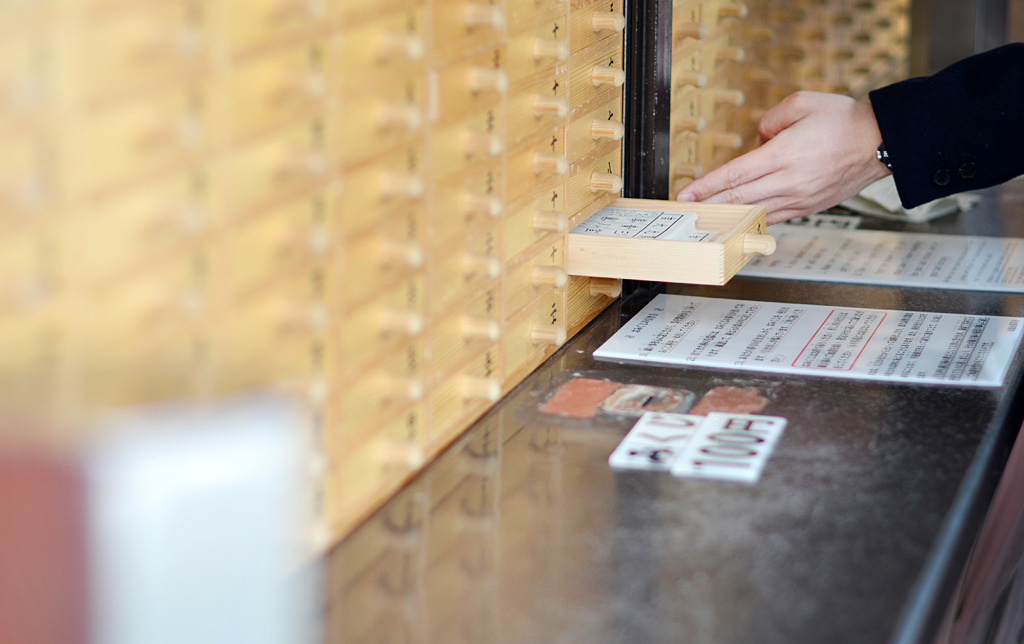 |
The friendly ticketing and info counter at Nagano train station.
|
 |
Ticket to Tokyo - direct Shinkansen on Asama 518 train.
|
 |
The Nagano Shinkansen is under the JR-East Rail. The line uses Asama trains, which are really nice and comfortable. And if you have booked the train that departs Nagano at 10.11am (Asama 518), it would take you to Tokyo in record time of 1 hour 20 minutes, with only 1 stop at Omiya. Train schedule details here: http://www.eki-net.com/pc/jreast-shinkansen-reservation/english/wb/common/timetable/e_nagano_u/02.html
|
 |
Buying a reserved seat would be a lot more comfortable, especially if you have a few pieces of luggage to handle.
|
 |
A ski resort spotted along the way.
|
 |
The toilet and amenity corridor.
|
 |
And guess what's behind that huge curved automatic sliding door?
|
 |
The Shinkansen line is located in Tokyo train station. So a transfer on the subway is needed to get to Shinjuku where our hotel was.
|
 |
View from our room at Prince Hotel, Shinjuku. Good location with a 5-minute walk to Shinjuku station.
|
 |
You'll also catch a glimpse of the Tokyo Skytree along the way.
|
 |
At the end of the shopping street stands the Hōzōmon (the Treasure House Gate), a two storey building that houses many of Sensō-ji's treasures.
|
 |
The three lanterns at the Hōzōmon.
|
 |
 |
 |
Some souvenirs to consider.
|
 |
 |
 |
Took a short break and had some hot sweet sake and local snacks.
|
 |
| A charming street beside Sensō-ji. |
 |
Back at the hotel. It's located opposite Kabukichō - Tokyo's entertainment and red-light district.
|
 |
The vibrant entertainment and red-light district of Kabukichō. It's interesting to walk around the district in the evening. Perhaps not after midnight unless you are looking for...
|
 |
| Something hot for a cold and rainy day. |
 |
 |
Finally ending the day in a small restaurant with some really nice hot grilled food.
|
GENERAL INFORMATION:
- Date: February 2015
- Accommodation: Prince Hotel, Shinjuku (http://www.princehotels.com/en/shinjuku/)
GENERAL TIPS:
- The weather could feel colder than the numbers suggest due to wind and rain. It's better to be over-prepared than under-provided. Do bring along REAL winter jackets from reliable makers.
- Jackets with hoods are absolute essentials. Scarfs, neck and face warmers are very effective as well.
- Bring a good pair of gloves that are thick enough but also fit well. Better if it's a pair of touchscreen-enabled gloves since we use our smartphones so often. It can be annoying if you are planning to use your smartphone as your camera and need to remove your gloves every now and then.
- Consider bringing heat packs as well to add some warmth in your pockets.
- Cold weather is dry weather. Bring some REALLY good moisturiser with you. Those little travel-size tubes will not be enough as it's easy to underestimate the amount of moisturiser needed everyday. Bring different types if you are particular about application on different areas like body and face (remember to check-in if it exceeds 100ml).
PHOTOGRAPHY INFO & TIPS:
- Was using Nikon D5100, Nikon AFS DX 10-24mm f3.5-4.5, Sigma 17-70mm f2.8-4 DC, Nikon AFS 50mm f1.4, Nikon AFS VR 70-200mm f2.8, Sony HX50V, Sony Action Cam AS30V, Apple iPhone 6, Samsung Galaxy Edge.
- Other than keeping your hands warm and functionable, gloves should be of perfect fit to handle and operate your camera easily. Best if they are designed for winter photography. Get touchscreen-enabled gloves if you're using cameras with touchscreen feature.
- Consider bringing cameras with bigger buttons and controls if you don't mind the bulk. I find it hard to use those tiny buttons on the D5100 with my gloves on.
- Use a lens hood. It can be useful to prevent rain water from hitting the glass directly, which can be annoying and hard to wipe dry. It rains quite often in Tokyo during winter.
- Extra batteries are critical as they deplete fast in cold weather.
- A waterproof outermost jacket with a hood could potentially eliminate the need to carry an umbrella. Imagine carrying an umbrella while trying to shoot.
- Most indoor areas are well heated during winter, which is great for us but not our lenses. If you have stayed in the warm indoors for long enough (e.g. for a meal), condensation will occur. Hence, try to keep your camera cold in the bag if you want to be able to shoot immediately.








No comments:
Post a Comment